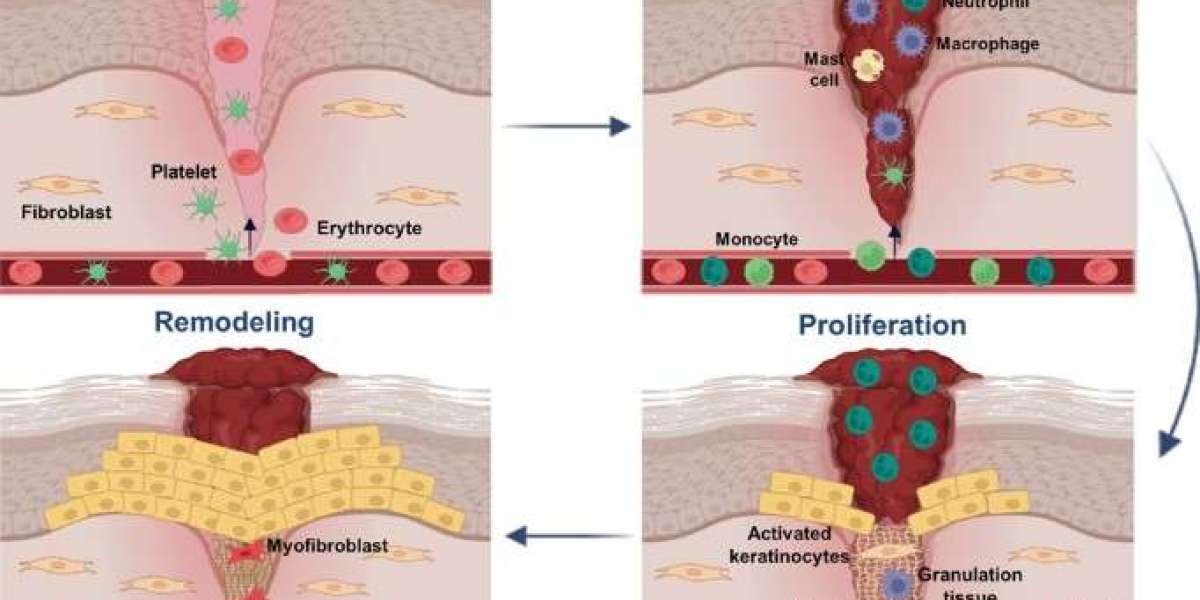Tissue Regeneration in Athletic Injuries: What Non-Invasive Shockwaves Offer
Athletes—whether professional or recreational—often push their bodies to the limit. With intense training, repetitive movements, and physical impact, injuries are almost inevitable. Traditionally, recovery from soft tissue injuries such as tendonitis, muscle tears, or ligament strains required long periods of rest and, in some cases, surgery. However, advancements in regenerative medicine have transformed how we understand healing. One of the most exciting frontiers in this field is Tissue Regeneration through non-invasive shockwave therapy.
This cutting-edge approach is helping athletes recover faster, reduce pain, and return to peak performance—without the need for surgery or long-term medication. Let’s explore what shockwave therapy is, how it promotes Tissue Regeneration, and why it’s becoming a game-changer in sports medicine.
Understanding Tissue Regeneration
Tissue Regeneration is the body’s natural process of repairing or replacing damaged cells, tissues, and organs. Unlike simple healing, which may result in scar formation, true regeneration restores the original structure and function of the tissue. In sports-related injuries, this process is crucial because it determines whether an athlete can regain full mobility and strength—or face chronic pain and limited performance.
Our bodies already have innate regenerative abilities. For example:
Muscle fibers can repair micro-tears caused by training.
Tendons and ligaments can rebuild collagen fibers after strain.
Bone tissue can remodel itself following fractures.
However, as we age or undergo repeated stress, the regenerative response slows down. Factors such as poor blood circulation, inflammation, and cellular fatigue hinder efficient healing. This is where medical technology, particularly shockwave therapy, plays a pivotal role in boosting the body’s natural repair mechanisms.
What Is Shockwave Therapy?
Shockwave therapy, formally known as Extracorporeal Shockwave Therapy (ESWT), is a non-invasive medical treatment that uses high-energy acoustic waves to stimulate healing in damaged tissues. Originally developed to break kidney stones (lithotripsy), its regenerative potential was later discovered in orthopedic and sports medicine applications.
The therapy involves applying controlled pulses of mechanical energy through the skin directly to the injured area. These shockwaves penetrate deep into the tissues, triggering a biological response at the cellular level that promotes Tissue Regeneration, pain relief, and functional recovery.
There are two main types of shockwave therapy:
Focused Shockwave Therapy – Delivers precise, high-energy waves to deeper tissues, often used for chronic injuries.
Radial Shockwave Therapy – Emits lower-energy waves over a broader area, ideal for superficial injuries and muscle conditions.
Both types are effective in stimulating the body’s healing mechanisms without incisions, anesthesia, or downtime.
How Shockwaves Promote Tissue Regeneration
Shockwave therapy’s success lies in its ability to activate biological repair mechanisms. When the shockwaves reach the injured area, several key processes occur:
1. Increased Blood Flow
The mechanical energy from the shockwaves stimulates the formation of new capillaries—a process known as angiogenesis. Improved blood flow ensures that oxygen and essential nutrients reach the damaged tissue, creating an ideal environment for Tissue Regeneration.
2. Stimulation of Stem Cells
Research shows that shockwave therapy activates mesenchymal stem cells (MSCs). These versatile cells can differentiate into muscle, bone, or tendon tissue, directly contributing to the regeneration process.
3. Collagen Production and Remodeling
Collagen is the structural protein that provides strength and flexibility to connective tissues. Shockwave therapy enhances collagen synthesis and encourages proper alignment of new fibers, leading to stronger, more resilient tissue.
4. Reduction of Inflammation
Chronic inflammation can delay healing and increase pain. Shockwave therapy helps regulate inflammatory responses by reducing pro-inflammatory mediators, allowing Tissue Regeneration to occur more efficiently.
5. Pain Relief Through Nerve Modulation
The acoustic waves temporarily disrupt pain transmission by overstimulating nerve endings. This leads to a decrease in pain perception and helps athletes regain movement without discomfort—an essential factor for rehabilitation.
Applications in Sports Medicine
Shockwave therapy has become a cornerstone treatment in sports medicine clinics worldwide. It is particularly beneficial for injuries involving soft tissues—the most common type among athletes.
Here are some examples of conditions effectively treated with shockwave therapy:
Tendinopathies (e.g., Achilles tendonitis, patellar tendonitis, tennis elbow)
Plantar fasciitis and chronic heel pain
Muscle strains and myofascial pain
Calcific shoulder tendinopathy
Medial tibial stress syndrome (shin splints)
Chronic back or hip pain due to soft tissue irritation
In these cases, Tissue Regeneration is critical because athletes not only need to heal but also restore the full strength, flexibility, and function of the injured tissues. Shockwave therapy supports this goal by addressing the root cause of injury—tissue degeneration—rather than simply masking symptoms.
The Non-Invasive Advantage
One of the greatest advantages of shockwave therapy is its non-invasive nature. Unlike surgery, which carries risks of infection, scarring, and long recovery times, shockwave therapy requires no incisions or anesthesia. Sessions typically last 15–30 minutes, and most patients can resume normal activities immediately afterward.
This makes it an ideal choice for athletes who can’t afford lengthy downtime. For example, a runner suffering from chronic Achilles pain might undergo a series of shockwave sessions while continuing modified training. Over a few weeks, pain diminishes, and Tissue Regeneration restores the tendon’s strength—allowing a full return to sport.
Moreover, non-invasive therapies like shockwave treatment align with the growing trend in sports medicine toward natural healing and biological optimization. The goal is not just to patch up injuries but to encourage the body to heal itself—stronger and faster than before.
Evidence and Clinical Studies
Scientific research has consistently validated the regenerative benefits of shockwave therapy. Multiple studies have demonstrated measurable improvements in tissue structure and function after treatment.
A 2019 study in The American Journal of Sports Medicine showed that athletes with chronic Achilles tendinopathy experienced a 60% improvement in pain and function after a series of shockwave sessions.
Another 2021 clinical review concluded that shockwave therapy significantly enhanced collagen fiber regeneration and reduced recovery time for soft tissue injuries compared to traditional physiotherapy alone.
MRI scans in certain studies revealed new tissue formation and increased blood vessel density in treated areas, confirming the process of active Tissue Regeneration.
While results vary depending on injury type and severity, the overall data supports shockwave therapy as a safe and effective option for promoting biological repair.
Integrating Shockwave Therapy with Other Regenerative Approaches
Tissue Regeneration can be enhanced even further when shockwave therapy is combined with other modern recovery modalities. Many sports rehabilitation centers integrate it with:
Platelet-Rich Plasma (PRP) Therapy – Shockwaves enhance the distribution and activity of PRP, which delivers growth factors directly to the injury site.
Physical Therapy and Functional Movement Training – Once shockwave therapy reduces pain and stimulates healing, targeted exercises help restore biomechanics and prevent reinjury.
Nutritional Support – Adequate protein, vitamins, and collagen-boosting nutrients accelerate cellular repair and Tissue Regeneration.
Cold Laser or Ultrasound Therapy – These modalities complement shockwave treatment by reducing inflammation and further stimulating metabolic activity in the tissues.
By combining these techniques, athletes experience faster, more complete recovery and a lower likelihood of recurring injuries.
Safety, Side Effects, and Considerations
Shockwave therapy is generally safe when administered by trained professionals. Mild side effects may include temporary redness, swelling, or tenderness at the treatment site. These usually subside within a day or two.
However, it’s important to note that not all injuries are suitable for shockwave therapy. Conditions such as acute fractures, infections, or vascular disorders may require alternative treatment approaches. A proper diagnosis and consultation with a sports medicine specialist are essential before starting therapy.
The Future of Tissue Regeneration in Sports Medicine
The field of Tissue Regeneration continues to evolve rapidly. Shockwave therapy represents just one component of a larger shift toward regenerative and personalized medicine, where the focus is on harnessing the body’s innate capacity to heal.
Ongoing research is exploring how shockwaves can be optimized for cellular signaling, stem cell activation, and even gene expression related to tissue repair. As these discoveries unfold, athletes may soon benefit from highly targeted, non-invasive treatments capable of reversing tissue damage at the molecular level.
This future vision—where injuries are not only healed but regenerated—promises to extend athletic careers, reduce healthcare costs, and redefine what recovery truly means.
Conclusion
Tissue Regeneration is the foundation of lasting recovery and peak performance in athletes. Non-invasive shockwave therapy has emerged as a groundbreaking tool that accelerates this process naturally—stimulating stem cells, improving circulation, enhancing collagen formation, and reducing pain without surgery or medication.
For athletes facing chronic injuries or seeking faster recovery, shockwave therapy offers hope—and results. By activating the body’s own regenerative capabilities, it bridges the gap between injury and performance, ensuring that healing doesn’t just mean getting back on the field but coming back stronger than ever.
In the evolving landscape of sports medicine, Tissue Regeneration through non-invasive technologies like shockwave therapy is not just the future—it’s already transforming recovery today.














